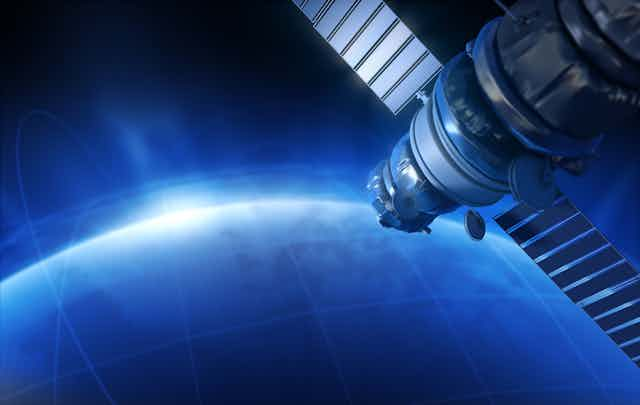The satellite Micius, launched from Jiuquan, China, in August last year, is unlike any other in the sky. While other satellites communicate with Earth using physics worked out by James Clerk Maxwell 150 years ago, Micius is the world’s first quantum-enabled satellite. And now, it has conclusively proved its quantum credentials.
For the first time, scientists have transmitted photons, or particles of light, that are “entangled” with one another from space to Earth. This entanglement, dubbed “spooky action at a distance” by Albert Einstein, is a uniquely quantum-mechanical phenomenon in which the behaviour of one particle is mysteriously choreographed with another – even though the particles can be at opposite ends of the universe. Manipulating one will instantly affect its entangled partner.
These new results pave the way for space-based quantum communication, a technology that promises to provide truly secure communication across the globe.
Every time we interact with our online bank, for example, the messages sent back and forth between computers are encrypted. People are essentially relying on the extreme unwieldiness of large numbers to keep their messages safe. But being able to encode and decode encrypted messages requires the sharing of secret keys – certain specific numbers that are used in the scrambling and unscrambling process.

If these keys were to be intercepted in the sharing process, a third party would be able to decode messages sent with that key and secrecy would be lost. It’s likely no one would know that security had been compromised until it was too late.
Quantum mechanics to the rescue
Physicists have shown, however, that the unusual properties of quantum particles can be used to share encryption keys in such a way that any interception of the keys by a third party would be immediately evident. If tampering was detected, keys could then be resent until one arrived intact and verifiably trustworthy.
This tamper-proofing requires the sharing of entangled particles and relies on the fact that entanglement is a peculiarly delicate phenomenon. Any attempt to interfere with the entangled particles immediately disrupts the entanglement, producing tell-tale signs that a message has been tampered with. And the magic of quantum mechanics is that this effect arises as a fundamental property of nature and cannot be circumvented.
Entangled photons can be created by shining a laser through special types of crystal. To be able to use these particles for communication, the trick is then to get them to the receiving stations where they are needed.
But herein lies the problem. In ground-based experiments, photons have to be sent either through the air or through optical fibres. Both of these methods are beset with losses — photons are either scattered by molecules as they travel through the air, or they leak out as they travel along optical fibres.
Unfortunately, sources of entangled photons do not produce many per second and losing precious photons en route rapidly downgrades our ability to do “quantum stuff”. Thus, ground-based experiments with entangled photons have been limited to distances of up to a few hundred kilometres.
The advantage of space
But this is where the Chinese satellite comes in. Stationed between 500km and 2000km above the Earth, Micius is an orbiting factory of entangled photons, sent to Earth in two beams.
Despite starting so far away, the beams generated on board have a relatively easy ride to Earth – only their last 10km or so is through the atmosphere. The rest of the journey is through what is essentially the vacuum of space. Thus, the photon pairs generated on Micius can be shared between two distant points on the Earth’s surface, while only being subject to the losses associated with travelling a small fraction of that distance through air.
The new study, published in Science, demonstrates that one can reliably send two beams of entangled photons from Micius to base stations some 1,200km apart, smashing previous records.
Moreover, the researchers performed a test (Bell’s inequality test) on the detected photons to show that they were still entangled – despite their journey from space. This is crucial since only entangled photons possess the ability to unlock the potential of quantum communication.
The next steps for Micius on the path to quantum key distribution will be to demonstrate a series of quantum phenomena, including quantum teleportation, in which quantum states such as velocity can be transferred between base stations. With other space-based quantum experiments sure to follow, these results from Micius may well come to be seen as a landmark in the development of a quantum internet.
There are, however, some concerns about the geopolitical context in which these experiments occur. China clearly understands the strategic benefits of the information security that quantum communications might bring. But let’s not also forget that these experiments mark an exciting first foray into testing quantum mechanics, one of our most fundamental scientific theories born from our studies of the subatomic world, over distances the size of a planet.

